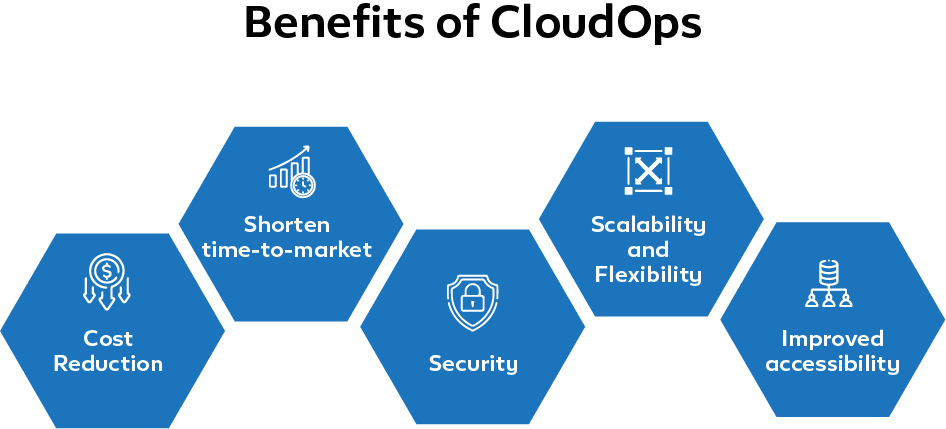- June 30, 2023
- Posted by: Indium
- Category: Cloud Engineering

A McKinsey report states that cloud adoption can unlock $1 trillion in business value, but that it is being lost due to inefficient cloud migrations that are making it cost and time-ineffective. With an estimated $100 billion wastage on migration expenses, costs are becoming a major inhibitor to cloud adoption. The skill gap is another challenge, which adds to the cost of either training existing employees or hiring new people.
The Need for Cloud Optimization
 The cloud has become critical for businesses today due to many factors.
The cloud has become critical for businesses today due to many factors.
- It enables centralizing operations management at lower costs with greater visibility into processes.
- It helps expand markets faster and with lower investments.
- It facilitates end-to-end management of workflows.
- It facilitates easy communication and collaboration between stakeholders.
- Technologies such as data, analytics, AI/ML, and IOT that leverage the cloud have further improved productivity, customer satisfaction, and operational efficiency.
However, the cloud can be like a leaky bucket. Along with its many benefits, it can be complex and requires an understanding of the multiple aspects that impact cloud infrastructure such as services, usage patterns, and pricing models. A lack of visibility into cloud costs can make it challenging for organizations to identify opportunities for saving costs and optimizing resource utilization.
To be able to leverage the benefits provided by the cloud infrastructure, it is important to make it more effective. Improving the delivery, optimization, and performance of IT services and workloads in the cloud environment requires best practices, procedures, and management of the cloud strategy. It requires cloud operations management or CloudOps to bring together people, processes, and technologies to execute the cloud strategy.
Some of the key pillars of a well-managed cloud infrastructure include:
- The governance layer facilitating the implementation of procedures and policies correctly for greater efficiency and lowers costs
- The framework layers such as the cloud application layer and the cloud operations layer helping the organization manage deployment, monitoring of applications, and operation of cloud services
- The security layer facilitating vulnerability and threat management and workload protection, and integrating with the company’s larger cybersecurity management function
Together, these layers form the foundation for CloudOps to improve application delivery on the cloud covering the following five aspects:
- Building
- Deploying
- Operating
- Monitoring
- Managing
This can help improve cloud adoption and usage in the organization, thereby increasing the return on investments and making them more agile. It can help businesses overcome hurdles for building capabilities for innovation and reducing the time to market while keeping their costs low. It also helps improve security and compliance.
The benefits of CloudOps can be summarized as:

- Optimization of Costs: Improved management of costs with CloudOps helps with cloud spend optimization, reducing wastage, and improving efficiency.
- Resource Allocation: Cost optimization improves budgetary planning and resource allocation for future needs.
- Risk Management: Identification of potential risks such as budget overruns, resource underutilization, and other cost management issues, and implementation of measures to mitigate the risks.
CloudOps Best Practices for Cost and Workload Management
Cloud operations or CloudOps uses continuous integration and continuous delivery (CI/CD), a DevOps principle, to improve availability and optimize business processes running on the cloud. The key aspects include configuration management, optimization of performance capacity, resource allocation, ensuring compliance, and facilitating the fulfillment of service-level agreements.
For CloudOps to be effective, it requires the following four pillars to be in place. They are:
Policy: Creating and enforcing policies to govern the usage of resources by users and applications is critical to improving the return on investment.
Abstraction: Management of the cloud must be decoupled from infrastructure to enable centralized management of cloud machine and storage instances, security, network, and governance using a single window.
Provisioning: Provisioning can be of two types – self or automated. Cloud users can allocate their own machines in self-provisioning and track usage. Automated provisioning is more efficient, allowing applications to request resources as needed and deprovision when not needed.
Automation: Automating processes such as provisioning, user and security management, and management of application program interface using AI/ML improve the efficiency of the cloud infrastructure.
To improve the cost-effectiveness and workload management of cloud infrastructure, CloudOps enables businesses to
- Have a clearly defined cost management strategy aligned with business goals.
- Monitor and analyze cloud costs using dashboards, reports, and cost management tools.
- Improve resource utilization by resizing or decommissioning underutilized resources.
- Empower employees with training and tools to create awareness about costs, track usage, and take responsibility to optimize resource utilization for improved ROI.
Making CloudOps Effective with Indium Software
Cloud optimization can be challenging due to the complex nature of cloud infrastructure and the lack of visibility into cloud pricing policies. This can lead to resources being underutilized and costs running high.
Indium Software is a cutting-edge solution provider that can help businesses improve cloud optimization by deploying a CloudOps strategy that overcomes the challenges and improves the ROI of cloud migration, modernization, cloud solution architecture, and so on. We help businesses understand their resource needs and utilization, identify opportunities for improvement, and implement bespoke solutions to meet cost and resource optimization goals.
There are several tools and technologies available to help businesses with monitoring and tracking cloud usage and managing cloud resources. The Indium team of cloud experts assesses the needs and deploys the best-fit solutions to help organizations meet their business goals and leverage cloud resources in a cost-effective manner. Our experience in DevOps and Cloud makes us well-suited to help businesses on their journey to becoming agile and breaking barriers to innovation.
To know more about Indium’s cloud capabilities
Visit
FAQs
A cloud strategy helps the organization adopt cloud technology and align it better with business goals. It is a roadmap that guides the organization in identifying the technological capabilities they need, and the risks of each technology being evaluated.
The cloud operating model provides an operational blueprint that defines the operational processes needed to execute the cloud strategy by bringing together people, processes, and technology.




